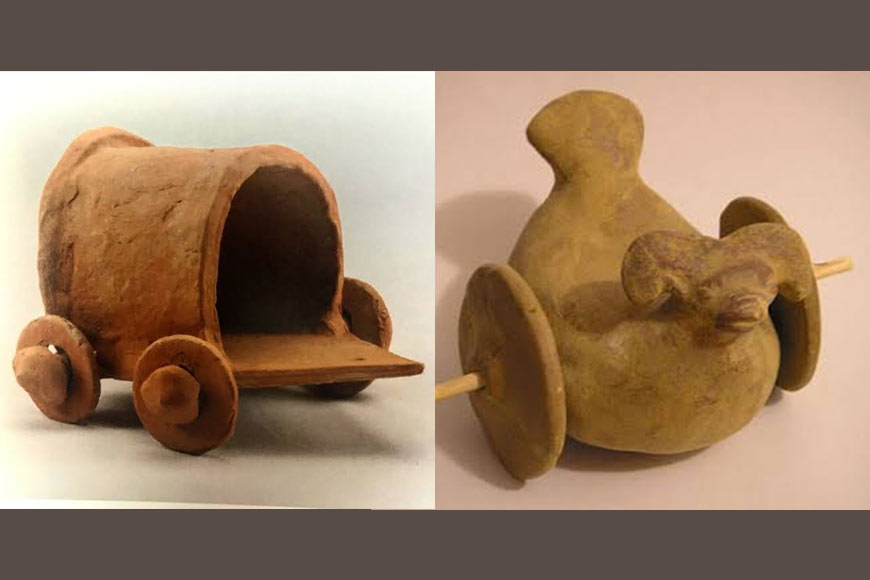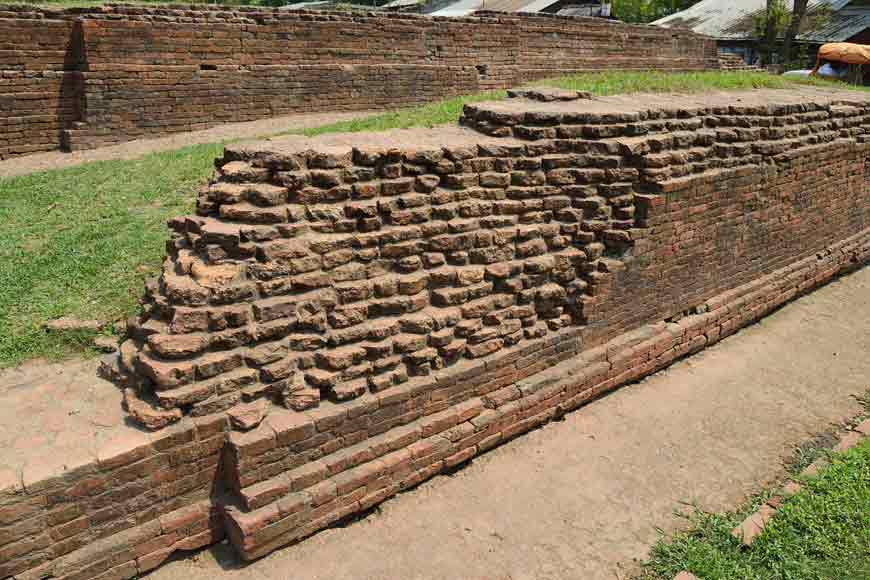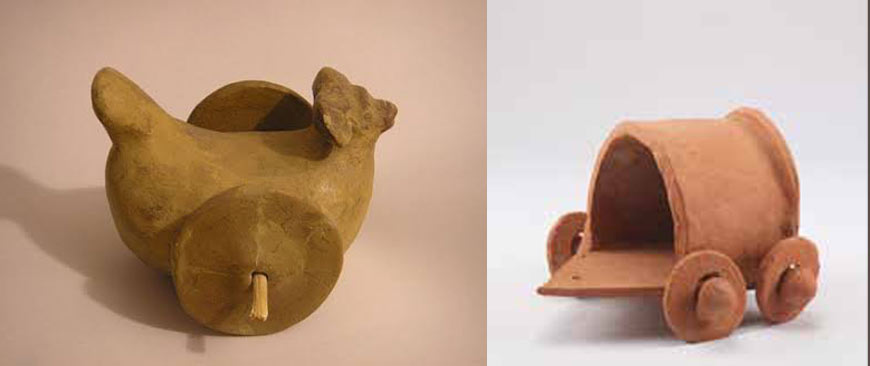Kushan period terracotta wheeled doll unearthed in Chandraketugarh

Archaeological excavations in various parts of Bengal have thrown up a variety of dolls and their different shapes mark a difference in their historical significance. The shapes of many clay dolls and toys which were discovered during archaeological excavations and research conducted at Tamluk, Berhachampa, Panna, Harinarayanpur, and other places of West Bengal, serve to remind us that the folk art of Bengal probably owes much of its identity to the sculptural skill of ancient artists. Also, after closely examining the idols discovered from these sites, such as elephants, elephants with wings, a rider mounted on an elephant, an ox, a ram, a rider astride a ram, an idol seated on a horse-driven chariot, and so on, archaeologists are of the view that all these objects were probably used in ancient times as children’s playthings. The artisans of Bengal continue to produce toys resembling dogs, oxen, rams, horses, elephants, and so on, with exactly the same pattern to this date. Thus a distinct trend of many thousands of years of cultural heritage is still on.
Recently, a wheeled doll of terracotta has been discovered at Chandraketugarh in North 24 Parganas, which displays a distinct creative style indicating that it was produced during the Kushan period. This wheeled doll shows a male figure seated in a small temple mounted on the back of a tiger, which reminds us of the tigers that roamed the dense forests described in Deb Pal’s copper plates of Nalanda. It is interesting to note that not just at Chandraketugarh, but many such wheeled dolls have been found in Tamluk of Medinipur, Harinarayanpur, and other archaeological sites of Bengal. So were these wheeled dolls used just by children? Or were they part of religious rites as well?

The answer is found in the creative style of these toys. Just as space was left for setting wheels on both sides of an idol of a ram produced during the Shunga-Kushan period, so was a small hole provided on its rump for inserting a long chip of wood or bamboo for pushing it around with ease. This would indicate that these objects were used solely as wheeled toys for the children of those periods. On the other hand, these toys fitted with wheels when considered as works of art remind us of the wheeled dolls mentioned in our famous Sanskrit composition Mrichhakoti.
Although the tradition of producing wheeled toys, once so popular among children in the past, may not be popular today, toys in Bengal fitted with wheels have not become completely extinct. Such toys are still seen at village fairs and are a good alternative to plastic and tin toys that are harmful to children. Even today, the potters of Patihal village under Jagatballabhpur police station in Howrah produce wheeled toys of elephants, wheeled boats pulled by boatmen, horse-shaped wheeled toys, and so on. They have provisions for attaching strings to them so that they can be pulled. The artisans draw strokes of red and green after applying a coat of lime and chalk on these toys that make them look very attractive. Even wheeled palanquins are also made by artisans of Howrah to reflect the heritage of Bengal. To make them look attractive, artisans apply red paint made from the juice of tamarind seeds. Ghughubeshe is another centre in Howrah where wheeled boats are made in abundance. A well-known festival celebrated in the Hooghly district is Mahesher Rathyatra. This festival and fair was very popular once upon a time. Even today small wheeled chariots are made as toys and sold. Similar toys are sold at Rather Melas of Amta.

Toys of striking designs resembling horse-drawn carts on wheels are found in Joynagar-Majilpur of South 24 Parganas. The demand for the wheeled toys produced at this particular place has not gone down despite the introduction of various modern toys for children’s entertainment. Wheeled dolls of a rider on horseback are also made by potters of Achhipur village under Budge Budge Police station but the largest collection of wheeled toys is still produced by the potters’ village of Berhachampa of 24 Parganas.
This is how the artistic vision of rural Bengal has tried to find expression by entertaining children through prolonged study and practice.









